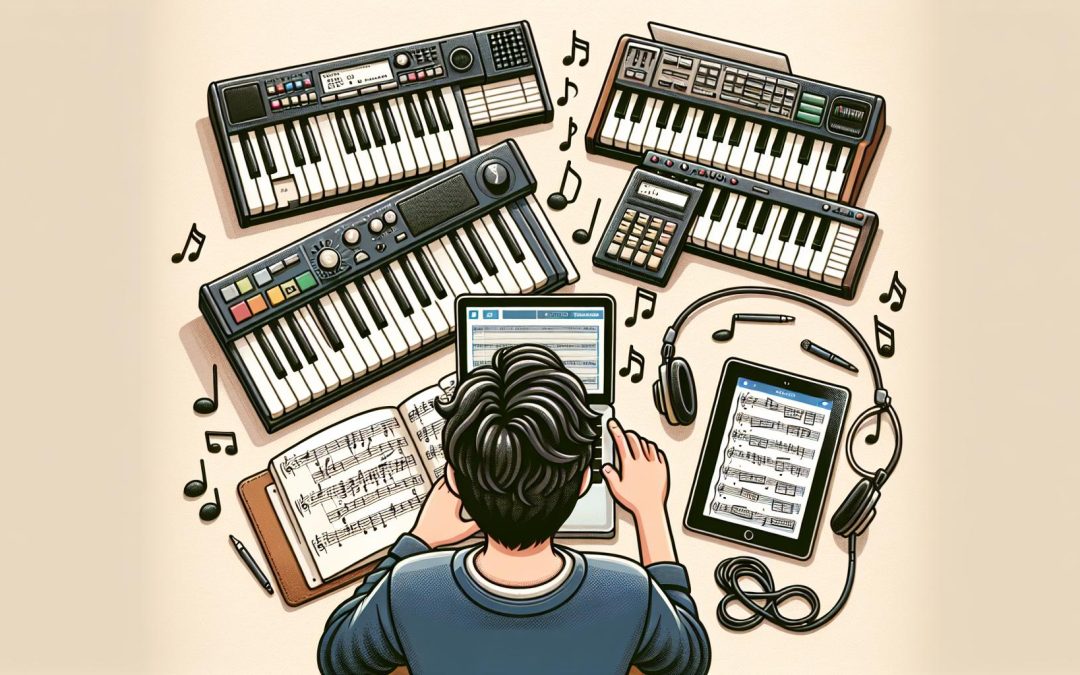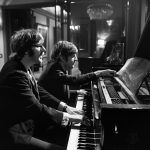Starting your musical journey can be thrilling, especially when it comes to recording your own music. For beginners, finding the right keyboard to kickstart this journey is crucial. It's not just about the keys and sounds; it's about finding a keyboard that'll grow with you as your skills flourish.
Choosing the perfect beginner keyboard for recording doesn't have to be daunting. With the right information, you can find a keyboard that offers the best blend of features, ease of use, and value for money. Whether you're looking to lay down your first track or simply want to experiment with sounds, the right keyboard can make all the difference.
Factors to Consider When Choosing a Beginner Keyboard
When diving into the world of music recording, the keyboard serves as the beginner's first point of contact with their musical expressions. It's not just an instrument; it's a companion on the journey toward musical fluency. So, taking the time to select the right keyboard is crucial. Here are key factors that every budding musician should consider.
Key Count and Size
The number of keys on a keyboard can significantly impact a beginner's learning curve and comfort. Standard keyboards have 88 keys, but for beginners, especially those short on space or budget, keyboards with 61 or 76 keys are more manageable and still offer a broad range of octaves for exploration.
- 61 keys are suitable for basic learning and compact spaces.
- 76 keys provide a middle ground, offering more octaves while still being manageable in size.
Touch Sensitivity
Touch sensitivity is a feature that allows the keyboard to respond to the force with which the keys are pressed, mimicking the acoustic piano's responsiveness. This is essential for expressing dynamics in music. Beginners will find that playing on a touch-sensitive keyboard greatly enhances their expressiveness and technique from the start.
Built-in Learning Tools
Many keyboards now come equipped with features and tools designed to assist beginners in their learning journey. These can include:
- Built-in lessons covering the basics of music theory, keyboard playing, and even specific song tutorials.
- Light-up keys that guide finger placement for learning songs.
- Apps and software compatibility for interactive learning experiences.
Sound Quality and Variety
A beginner's keyboard should inspire creativity and passion for music. High-quality sound samples and a variety of instrument voices can make practice sessions more enjoyable and productive. From grand pianos to strings and percussion, the sound variety can also fuel a beginner's exploration of different music genres.
Connectivity Options
For those looking to record music, connectivity options are a non-negotiable aspect. USB and MIDI (Musical Instrument Digital Interface) ports are vital for connecting the keyboard to computers and other recording equipment. This connectivity not only facilitates recording but also opens up a world of digital learning and music production software.
Here's a brief comparison of essential features to look for:
| Feature | Importance |
|---|---|
| Key Count and Size | Choose based on space available and the range of music you wish to explore. |
| Touch Sensitivity |
Top Features to Look for in a Beginner Keyboard

When stepping into the world of music recording, selecting the right keyboard can be a pivotal decision for beginners. It's not just about finding any keyboard but rather one that aligns with their learning curve and recording needs. Here are the key features to keep an eye out for when shopping for a beginner keyboard.
Key Count and Size
A standard acoustic piano has 88 keys, but beginners may not need the full range immediately. Keyboards with 61 to 76 keys are often more than sufficient for those just starting out. They offer enough octaves to explore a variety of music genres without feeling overwhelmed. Additionally, the size of the keys is critical. Full-size keys provide a smoother transition to playing an acoustic piano later on.
| Feature | Ideal Specification |
|---|---|
| Key Count | 61 to 76 keys |
| Key Size | Full-size keys |
Touch Sensitivity
Touch sensitivity is a vital feature that allows the keyboard to respond to the pressure of the fingers, mimicking the expressiveness of an acoustic piano. Beginners will benefit greatly from a touch-sensitive keyboard as it aids in developing dynamics in their playing from the start.
Built-in Learning Tools
Modern keyboards come equipped with built-in learning tools that are incredibly helpful for beginners. From light-up keys to step-by-step lessons, these features guide learners through the basics of music theory and technique. Some keyboards even offer apps that learners can use to further their skills at their own pace.
Sound Quality and Variety
High sound quality is essential for creating recordings that beginners can be proud of. A good beginner keyboard should offer a range of sounds or voices, from different types of pianos to orchestral instruments, which can inspire creativity. Having a variety of high-quality sounds at their fingertips allows beginners to explore different music styles and find their unique sound.
| Feature | Ideal Specification |
|---|---|
| Sound Quality | High |
| Sound Variety | Wide range of voices |
Connectivity Options
Connectivity is another crucial factor to consider. A beginner keyboard should have options for connecting to computers, smartphones, or other MIDI devices. This connectivity allows for easy recording, editing, and sharing of music. USB and MIDI ports are common in many models, making them compatible with a variety of music software and recording setups.
- USB Ports
- MIDI Ports
Best Beginner Keyboards for Recording Music

When stepping into the world of music recording, finding the right keyboard can make all the difference. Beginners should look for instruments that not only appeal to their musical tastes but also support their learning journey. Here’s a glance at some of the top choices that blend quality, features, and value.
Yamaha PSR-EW300
The Yamaha PSR-EW300 is a standout among beginner keyboards, offering 76 touch-sensitive keys for expressive playing. It strikes a perfect balance between functionality and affordability, making it an excellent choice for those starting their musical journey. Notably, the PSR-EW300 comes with a robust selection of 574 instrument voices, allowing beginners to explore various sounds and genres. With its built-in education suite, learners can practice at their own pace using the included lessons on chords, techniques, and music theory.
- Key Features:
- 76 touch-sensitive keys
- 574 instrument voices
- Built-in education suite
- USB connectivity for easy recording
Casio CTK-2550
Another great starter option is the Casio CTK-2550, a compact keyboard with 61 keys. It’s designed to be easily portable while still offering a rich set of features. With 400 high-quality tones and 150 built-in rhythms, it provides a variety of musical exploration paths. The CTK-2550 doesn’t skimp on educational resources either, as it includes access to the free Chordana Play app, which helps beginners learn to play their favorite songs with a smartphone or tablet.
- Key Features:
- 61 keys
- 400 tones, 150 rhythms
- Chordana Play app compatibility
- Dance music mode for creating and remixing electronic tracks
Alesis Melody 61 MKII
For those looking for an all-in-one package, the Alesis Melody 61 MKII is a compelling choice. This keyboard not only comes with 61 full-size keys but also includes accessories such as a stand, bench, headphones, and a microphone for singing along. It features 300 built-in sounds and 40 demo songs, alongside an easy-to-use record feature for capturing creative moments. The Melody 61 MKII is perfect for beginners who want everything they need to start playing right out of the box.
- Key Features:
- 61 full
Tips for Getting the Most Out of Your Beginner Keyboard

Embarking on a musical journey with a beginner keyboard opens a world of possibilities. Whether it's the Yamaha PSR-EW300, Casio CTK-2550, or Alesis Melody 61 MKII, maximizing the potential of these instruments involves more than just pressing keys. Here are some strategies and practices that can significantly enhance the learning and recording experience.
Firstly, exploring the full range of sounds and features inherent in these keyboards ignites creativity and broadens musical horizons. Each model mentioned comes packed with a variety of instrument voices and rhythm patterns. Spending time to explore these sounds not only familiarizes beginners with different musical genres but also provides a comprehensive toolkit for creating unique compositions.
In addition, leveraging the educational tools and apps that accompany these keyboards can dramatically improve proficiency and understanding of music theory. For instance, the Yamaha PSR-EW300 and Casio CTK-2550 offer access to software that guides beginners through lessons, helping them learn songs and techniques at their own pace. This blend of technology and traditional learning accelerates growth and builds a solid foundation in music.
Recording and listening back to one's performances should become a regular practice. Most beginner keyboards feature easy recording options that allow musicians to capture and review their playing. This not only helps in identifying areas of improvement but also tracks progress over time. It’s an excellent way for learners to critique their own work, understand timing, and focus on dynamics that they might overlook during the act of playing.
Setting realistic goals and challenges for oneself ensures steady progress and keeps motivation high. Whether it's mastering a new song, experimenting with composing, or exploring the use of different instrument voices, setting milestones can make the learning journey exciting and rewarding.
Lastly, connecting with a community of fellow musicians can provide invaluable support and inspiration. Online forums, social media groups, and music classes offer platforms where beginners can share experiences, ask for advice, and collaborate with others. This sense of community not only encourages learning through sharing but also opens up opportunities for feedback from more experienced musicians.
By embracing these approaches, beginners can unlock the full potential of their keyboards. It's not just about having the right equipment but also about adopting the right mindset and practices to foster musical growth. Each step taken is a step closer to realizing one's musical aspirations, making every moment spent at the keyboard profoundly rewarding.
Conclusion
Choosing the right beginner keyboard like the Yamaha PSR-EW300, Casio CTK-2550, or Alesis Melody 61 MKII is just the start of an exciting musical journey. By diving into the features these keyboards offer and leveraging educational tools, beginners can rapidly enhance their skills. It’s about more than just practicing; it's about exploring music's vast possibilities and connecting with others who share the same passion. So grab your keyboard, set some goals, and start making music that expresses your unique voice. The world of music awaits and it's filled with endless opportunities for growth and creativity.
Harlan Kilstein began playing piano during covid with no piano background at all. He taught himself how to play learning what to do and what not to do.
Today he's an advanced intermediate player and can help you grow in your skills because he learned all this on his own.








